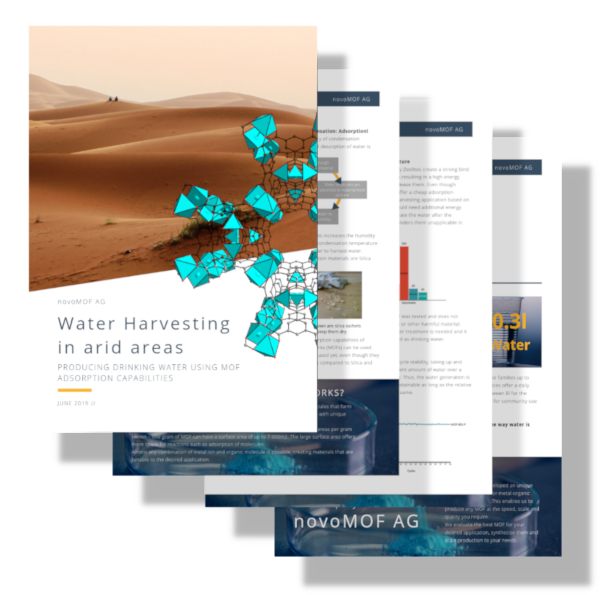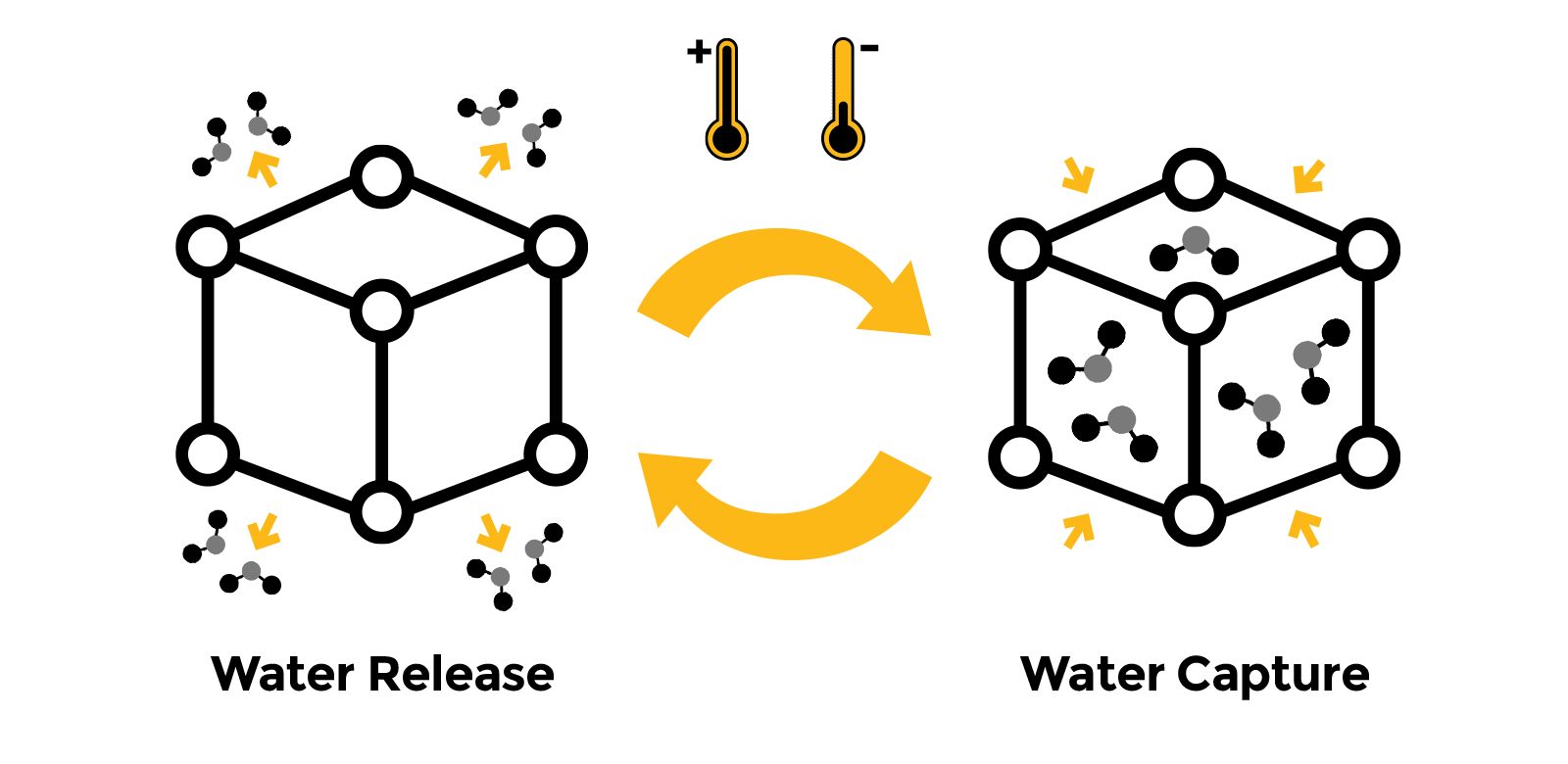Water harvesting
Water resources are one of the most valuable things for humankind. Due to the limited water for human consumption, increasing its availability in remote locations is vital.
In arid regions such as North Africa, the Middle East, and Australia, where the water supply is scarce, alternatives for water harvesting technology are critical.
MOFs can be used for atmospheric water harvesting; these hybrid materials can considerably reduce the energy input for a more efficient adsorption-desorption process. MOFs can adsorb water in humidity levels as low as 32% rH, making them suitable for arid conditions. For instance, Al-MOF-303 metal-organic framework has shown a water generation capacity of 0.7 L/kg MOF-day at 27°C in actual desert conditions. Although other adsorbents such as zeolites and silica can be used for atmospheric water harvesting, they need higher release temperatures (above 120 °C) than MOFs (below 100 °C), which makes them dependent on energy systems.
MOF-based materials for water harvesting in either membrane systems or adsorption technology show promising results under real weather conditions. Their efficiency is comparable to other well-established methods with lower energy requirements. Here, water is adsorbed in the cold night, and the water is desorbed using sunlight during the day. One cycle can be run per day powered by the sun in that configuration. Multiple cycles can be run per hour using an additional energy source to increase daily water productivity.
Case Study
Water harvesting
Water supply is a critical factor in arid areas such as Africa, the Middle East and Australia. Unlike other materials, MOFs can harvest water even from very dry air and with very low energy consumption.

Key points covered:
- Comparison between Silica, Zeolite, and different MOFs
- MOF specific properties
- Benefits of MOFs for Water Adsorption

